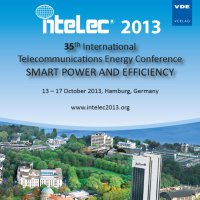DC power wide spread in Telecom/Datacenter and in home/office with renewable energy and energy autonomy
Conference: Intelec 2013 - 35th International Telecommunications Energy Conference, SMART POWER AND EFFICIENCY
10/13/2013 - 10/17/2013 at Hamburg, Deutschland
Proceedings: Intelec 2013
Pages: 6Language: englishTyp: PDF
Personal VDE Members are entitled to a 10% discount on this title
Authors:
Marquet, Didier (France Telecom Orange, 38 Rue Gén Leclerc 92130 Issy-les-Moulineaux, France)
Tanaka, Toshimitsu (NTT Facilities, inc., Granparktower, 3-4-1 Shibaura, Minato-ku, Tokyo, 108-0023, Japan)
Murai, Kensuke; Toru, Tanaka; Babasaki, Tadatoshi (NTT Energy and Environment Systems Laboratories, 3-9-11, Midori-cho Musashino-shi, Tokyo, Japan)
Abstract:
MegaWatt-sized 380V direct current (DC) power interfaces systems intended to power data centre and telecom sites are now deployed in the field. The use of DC is not limited to telecom Information and Communication Technology (ICT) equipment. DC is suitable for simple renewable energy and smart grid functions, such as peak shaving. Researches and standards are exploring other benefits of DC in many other areas. We discuss the latest assessment in energy saving by comparing reliability, compactness, and reduction of power material in line with the new e-waste resolution of the International Telecom Union (ITU-T). We also present the on-going work on DC in the European Telecom Standard Institute (ETSI) and ITU-T. With billions of mobile, portable, and nomadic ICT devices including smart phones, tablets, PCs and many accessories all equipped with rechargeable batteries, DC is associated with local electric autonomy and higher energy efficiency. Mobile networks are rapidly being rolled out in emerging countries and all are suitable for using equipment in safety extra-low voltage (SELV) DC in low-power home networks. In developed countries, the electric mix using more renewable energy is also encouraging the use of DC with local autonomy integrated into a high-quality SELV grid for ICT as argued by Greengrid@Home and Emerge Alliance. We discuss some quantifications of these new DC architectures and how the convergence of ICT and energy can facilitate smartgrids and microgrids towards a more decentralized and interactive vision. Particular focus will be on the advantages and disadvantages of DC power feeding incorporating photovoltaic generation patterns in usage for data centres/base stations/office buildings, DC and DC+AC hybrid architecture considering grounding and cabling, efficiency and spacing, and finally compliance with a vast majority of office devices, e.g., portable PCs, ceiling fans, telephones, mobile phones, tablets, and lights, using DC.


